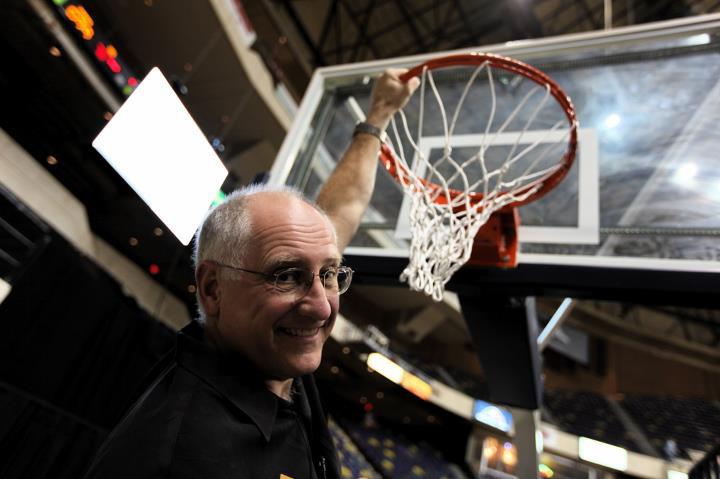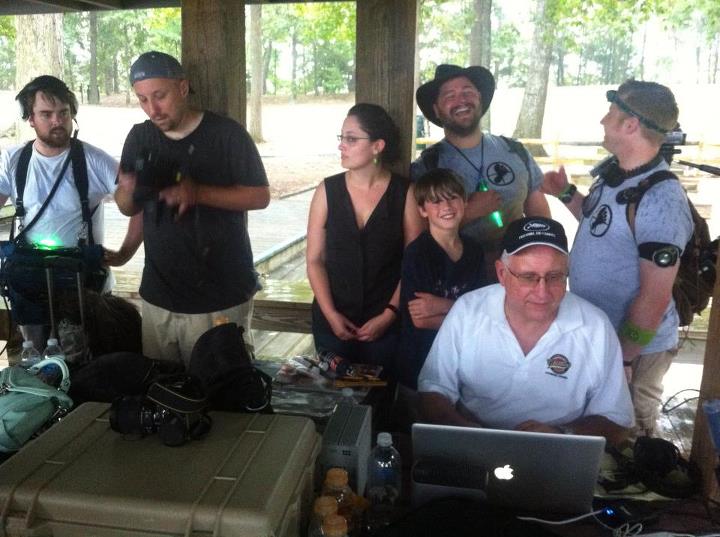The Making of a 48 Hour Film Project Winner
The 48 Hour Film Project offers filmmakers a chance at fame and glory and unleashed creativity, along with the insanity of producing a film from pre to post in two days. Scott Strimple, editor of award-winning 48HFP entries two years running, recounts what it was like putting together this year's film. In Part 2 he'll discuss the instrumental role Apple Final Cut Pro X played in editing and delivering the film with a cool 9 minutes to spare.
Participation is its Own Reward
Win or lose, the rewards of participating are many. As many of us can attest to, shooting and editing to generate income isn't always "fun," and the 48HFP is a chance to enjoy collaborating with others, "to do something for yourself without an agenda." It's a refreshing, albeit hurried, change of pace for filmmakers who too often find themselves bogged down by permit-gathering, contract-signing, and indecisions that come with more forgiving deadlines. As Strimple says, "When you only have 48 hours, there's not a whole lot of time to B.S. You really get an opportunity to experience the collaborative nature of filmmaking at its best. You can't can't worry about not getting a permit, or an actor not getting a contract. It allows filmmakers to focus on craft without those tertiary factors."

United Wedding founder and final.revised editor Scott Strimple
For anyone interested in the 48HFP experience, Strimple gave us a rundown of what it was like putting together this year's film. In the next installment he'll discuss the instrumental role Final Cut Pro X played in editing the film within deadline--with a cool 9 minutes to spare.
Pre-Production: Crewing and Gearing Up
Richmond, like every 48HFP city (there are more than 100), opens a limited number of slots for entrants. Teams of every skill level, from first-timers to professionals like Strimple, register on a first-come-first-served basis, often months in advance. After registering, final.revised set out in June to address the only tasks allowed prior to the start of the competition: strictly "non-creative" ones, such as gathering cast, crew, and equipment and scouting and securing locations. At this meeting assigned roles, such as "Who has cameras? Who has venues? Who's going to be in it?" began to fall into place. With a cast of professional actors, shooters, editors, and a commercial sound engineer, and all the equipment that comes with them, final.revised had their bases covered.
Team members include Producer Michael Park and Director Victor Nash, both from Richmond's NBC12 news channel and the guys who invited Strimple to join the team; SAG actors available thanks to their channel 12 connections; DP Martin Montgomery, owner-operator of Martin Montgomery Films; comedians from the West End Comedy Club; sound engineer Proctor Trivette; and others. Their planning meeting also served a second purpose, to build chemistry and momentum. To operate more efficiently during the contest, they caught up, reminisced, and established rapport. Going into the competition, Strimple felt they had a solid group of people. "They key to our team is a diverse group of creatives that come together with very few, if any, egos."

Hard at work on Foot Patrol, members of the final.revised crew, including editor Strimple at the MacBook Pro and DP Montgomery with DSLR
Production: Forty, Forty, Forty-Eight Hours to Go
Richmond's 48HFP kicked off on Friday at 7:00 p.m., when 44 teams randomly drew genres--sci fi, horror, and musical, or western (or a western musical!) among them. This year, as in 2011, final.revised drew "mocumentary." Samantha Tucker, Richmond's 48HFP producer then announced what everyone had been waiting to hear: All films must include the character Adam/Alana Nicholson who is a door-to-door salesperson, a flashlight, and the line, "Why am I always first?"
At 7:30 p.m., the clock started ticking. Final.revised immediately went into pre-production mode, hunkering down for the night to brainstorm. Every team member who wanted to be involved in concepting and storyboarding was welcome there. Many of the actors, including Jim Jackman of Spaceballs fame and Katie McCall--"two phenomenal actors in their own right"--helped by bouncing ideas off of the production team, who gave feedback on whether they were possible from a production standpoint. For example, after Bigfoot became a central theme, someone suggested having him in the federal Witness Protection Program. That called for a scene where he is seen on a Jumbotron at a basketball game, but that idea didn't make it far. "We were all over the place" with story ideas, laughs Strimple. Somewhere around 10:00 p.m. or 11:00 p.m., Strimple proposed flipping the storyline--"What if the hunter became the hunted?" They went in that direction, with "Bigfoot" pranking his followers.
As Friday night drew to a close and with the concept nailed down, the team put together an outline of major moments that would drive the story. "What we get at the end of the day is more of an outline with bullet points that took on a life of its own." After a few hours' sleep, the team gathered in the woods for a 4:30 a.m. call time. The original plan was to shoot the story in a somewhat sequential order and edit little sequences in the field, in order to buy time later in the edit bay. Things went swimmingly for a few shots, but then, true to Murphy's Law, a storm hit and continued throughout the day. Richmond's 48HFP Facebook page posted, "Between the cicadas and thunderstorms...sounds like there have been some interesting obstacles this weekend!"
"This year weather was a huge challenge," Strimple says. "We had to incorporate the weather into our script, which we weren't going to do." When it started storming, everyone took a break under a pavilion. They worried about continuity, that in one shot it would look dry, and the next wet. "It didn't turn out to be a big deal," and in fact, helped them figure out an end to the story. (If you watch the film, you'll see that the techie's gadgets fizzle in the rain, postponing the hunt for Bigfoot.) On the upside (depending on whether you're the one who has to go through all of it), they got enough footage. Actually, "way too much footage," Strimple says. As they posted on their team's Facebook page, "I think we shot a feature :)".
By 8:00 p.m., shooting had wrapped for final.revised, while most teams continued to shoot through the night and into Sunday. Now final.revised sat down to edit, slogging away until 4:30 a.m. They resumed at 9:30 a.m. on Sunday, and had a rough cut ready for tweaking. We'll hear all about the editing of the film next time, about their use of Final Cut Pro X, as well as After Effects, and the graphics and audio work they completed.
"Foot Patrol" a final.revised film from Victor MA Nash on Vimeo.
Related Articles
In this first installment of our new tutorial series, Glen Elliott demystifies Final Cut Pro X, illustrates its core functions, and focuses on one of the most powerful new features for organizing, accelerating, and streamlining your edits: metadata keyword tagging.
Jan Ozer sits down with Bill Roberts to discuss the trends impacting the future direction of Adobe Creative Suite for video pros, including the decline of 3D, the rise of 4K, and second-screen viewing. Other topics included the growth of Creative Cloud, and the development arc of Apple Final Cut Pro X.
No matter how fast, efficient, and determined a 48 Hour Film Project production team is, they need to finish strong with a streamlined edit. Final.revised editor Scott Strimple describes how Apple Final Cut Pro X allowed him to deliver the goods on deadline, by leveraging key features that could make any edit cook.